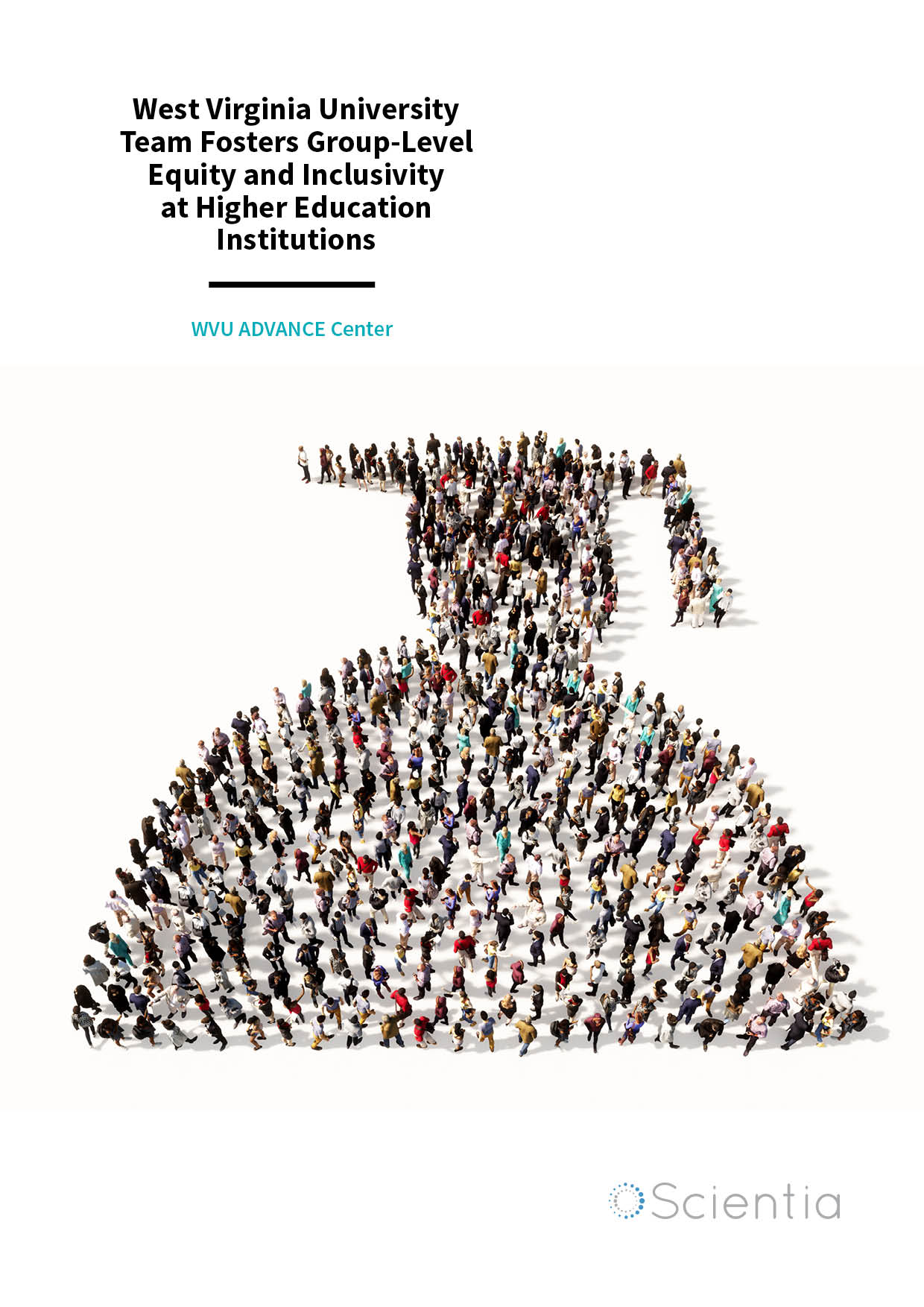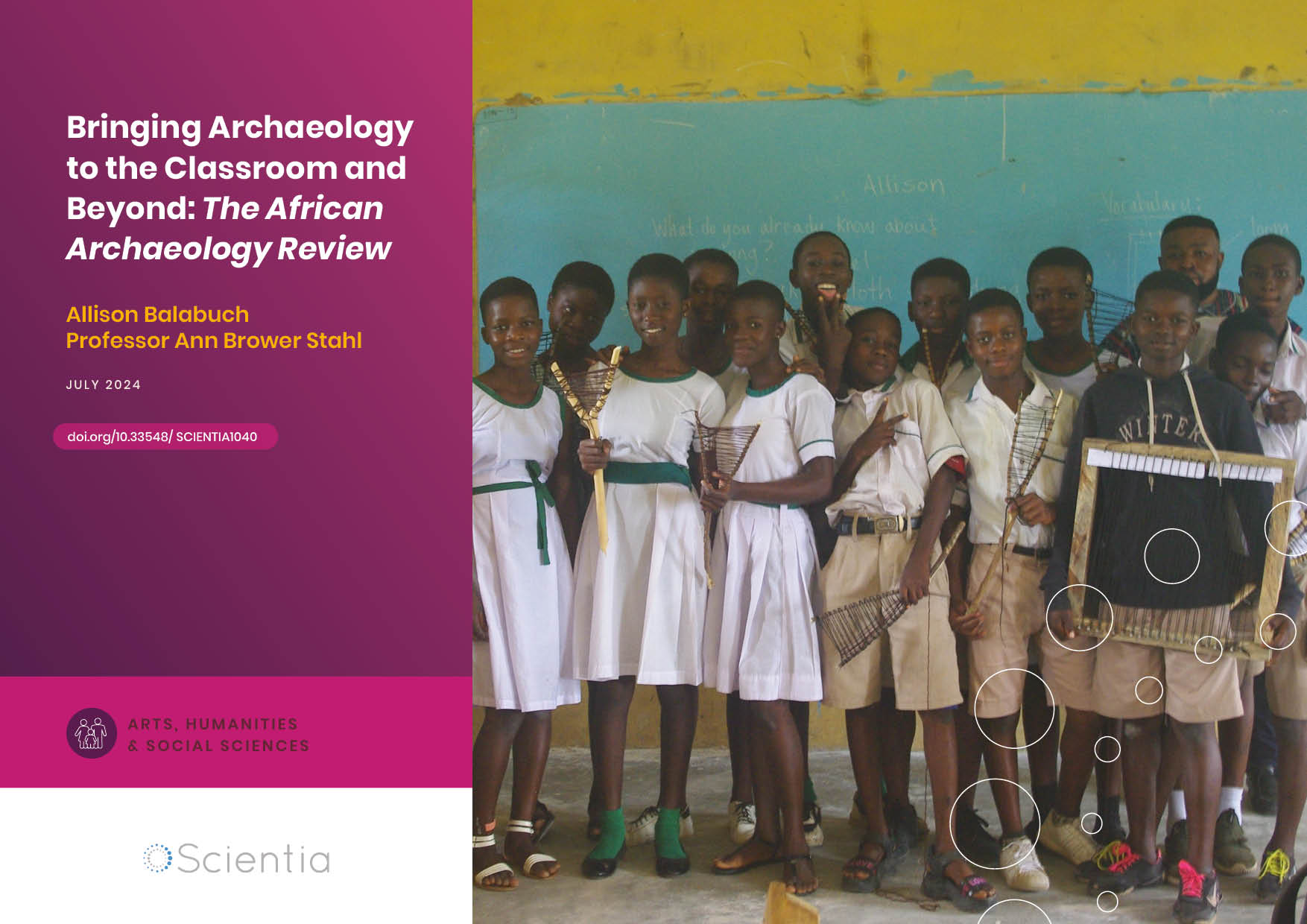Dr Liming Li – Exploring Energy Flow in Planetary Atmospheres
Within the atmospheres of different planets, energy is continually moving around and being converted into different forms. In his research, Dr Liming Li at the University of Houston studies how the different worlds of our solar system generate, transfer and convert energy in different ways. Through analysing the atmospheres of Jupiter, Saturn, Titan and Earth, his team has made discoveries that provide new insights both for astronomers and for scientists studying our own changing climate.
Flowing Energy
Scientists can draw conclusions about planetary atmospheres from three fundamental properties of the energy flowing within them. Firstly, the ‘radiant energy budget’ is the balance between the energy that a planet absorbs from the Sun and the energy that the planet emits. The energy from the Sun travels through space in the form of radiation, before interacting with a planet’s atmosphere. Once this energy has been absorbed, ‘radiative transfer’ describes how it moves around – crossing between different systems within the larger planetary system. Finally, this radiant energy can be converted into many different forms, such as mechanical energy.
As Dr Liming Li of the University of Houston describes, these three energy flow properties together have a profound influence over the ways in which atmospheres behave. ‘The radiant energy budget and its variation over time influence the thermal structure of these atmospheric systems,’ he says. ‘Furthermore, the transfer and distribution of radiant energy within these atmospheric systems can generate mechanical energy to drive atmospheric circulation, weather and climate.’ Understanding these three aspects is vital for explaining the dynamics of planetary systems as a whole, including our own.
Focus on Four Worlds
Dr Li and his colleagues investigate real observations of the planets and moons of the solar system, each of which displays its own unique behaviour. Within the solar system, there is a diverse range of active worlds to explore, from small, rocky moons to colossal gas giants. Clearly, such a high degree of diversity means that energy budgets, and the rates of energy transfers and conversions, will vary widely between different bodies.
Though it is challenging to study such different systems using the same techniques, Dr Li believes it is hugely beneficial for astronomers and Earth scientists alike. ‘For giant planets, the radiant energy budget and the related internal heat also can help understand the evolutionary history of planets,’ he explains. ‘In recent years, my research group has been exploring the radiant energy budgets and mechanical energy cycles for the atmospheric systems of the gas giant planets, including Jupiter and Saturn, and some rocky bodies, including Earth and Titan.’
These four worlds each present their own unique set of challenges for astronomers and Earth scientists exploring the flow of energy within their atmospheres. Yet despite their differences, studies of such planets and moons can yield important insights into Earth’s atmosphere. At a time when the atmospheric energy budget is severely disrupting the climate on our home planet, these insights are now critically important.
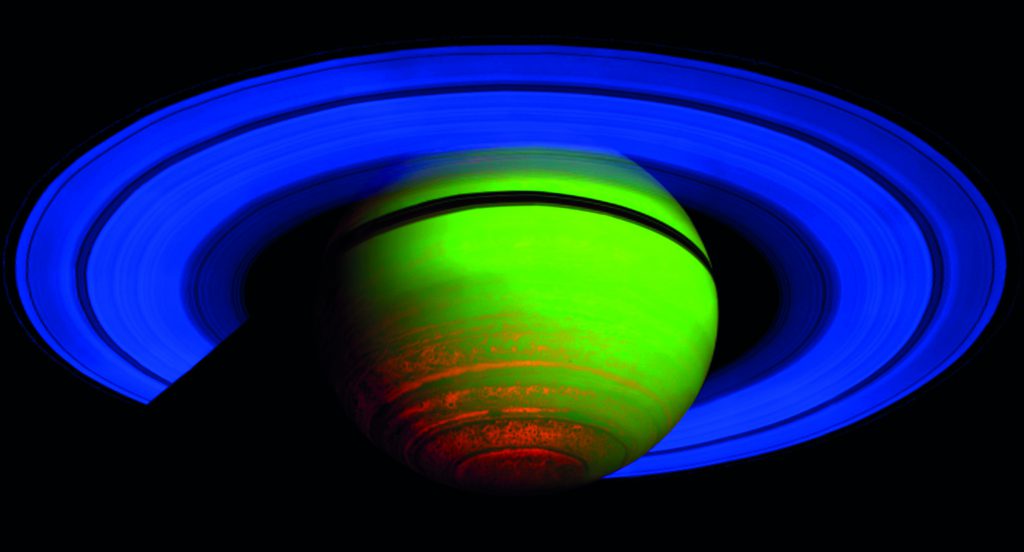
Heat (red) emitted from the interior of Saturn shows up in this false-colour image, made from data taken in 2008 by Cassini’s visual and infrared mapping spectrometer. CREDIT: NASA/JPL/ASI/University of Arizona.
Jupiter’s Energy Budget and Internal Heat
The solar system’s largest planet has been mystifying astronomers for centuries, with its endlessly swirling clouds masking a deeply complex set of underlying behaviours. One of the biggest uncertainties about Jupiter is the reflectivity of its gases – a value that is strongly linked to its energy budget. From data gathered by the Pioneer and Voyager missions, which each flew past Jupiter in the 1970s, astronomers had estimated that the planet reflected just 30% of the Sun’s light back into space.
In their work, Dr Li and his colleagues used updated data on Jupiter, gathered by the Cassini spacecraft, which made its closest approach to the planet in 2000. Using data on reflected light gathered by the spacecraft, the researchers concluded that Jupiter reflects around 50% of the sunlight that it initially absorbs. In addition, they found that Jupiter generates more heat in its interior than previously thought.
Dr Li believes that the new findings will help us to better understand the formation and evolution of planets in our solar system. ‘Based on the observations from the Cassini spacecraft, we conducted the best measurements of Jupiter’s radiant energy budget and internal heat,’ he summarises. ‘The new measurements significantly improve previous estimates and have wide applications and impacts in planetary science, meteorology and astronomy.’
‘In recent years, my research group has been exploring the radiant energy budgets and mechanical energy cycles for the atmospheric systems of the gas giant planets, including Jupiter and Saturn, and some rocky bodies, including Earth and Titan.’
Saturn’s Emitted Power
Cassini also provided Dr Li’s team with useful data about Saturn – the end point of the mission. After the craft began orbiting Saturn in 2004, its infrared spectrometer collected consistent data on the energy emitted from the planet’s surface. The data revealed that Saturn’s southern hemisphere was emitting more energy than its northern one – a result that was consistent with the gas giant’s distinctive systems. More mysteriously, however, the data also showed that the planet as a whole cooled for several years before 2009, before beginning to heat up again.
In 2010, astronomers observed a violent storm on Saturn, which increased the global power emitted from its surface by around 2%. Similar violent storms could be a regular occurrence on this planet, reappearing once every Saturnian year – the equivalent of around 30 Earth years. If this is the case, storm clouds could be periodically affecting Saturn’s radiant energy budget and hence atmospheric evolution.
‘We examined the temporal variations of Saturn’s emitted energy for the first time,’ Dr Li summarises. ‘Our studies suggest that seasonal cycle and the 2010 great white spot – the largest storm ever discovered on Saturn – both play important roles in Saturn’s radiant energy budget.’
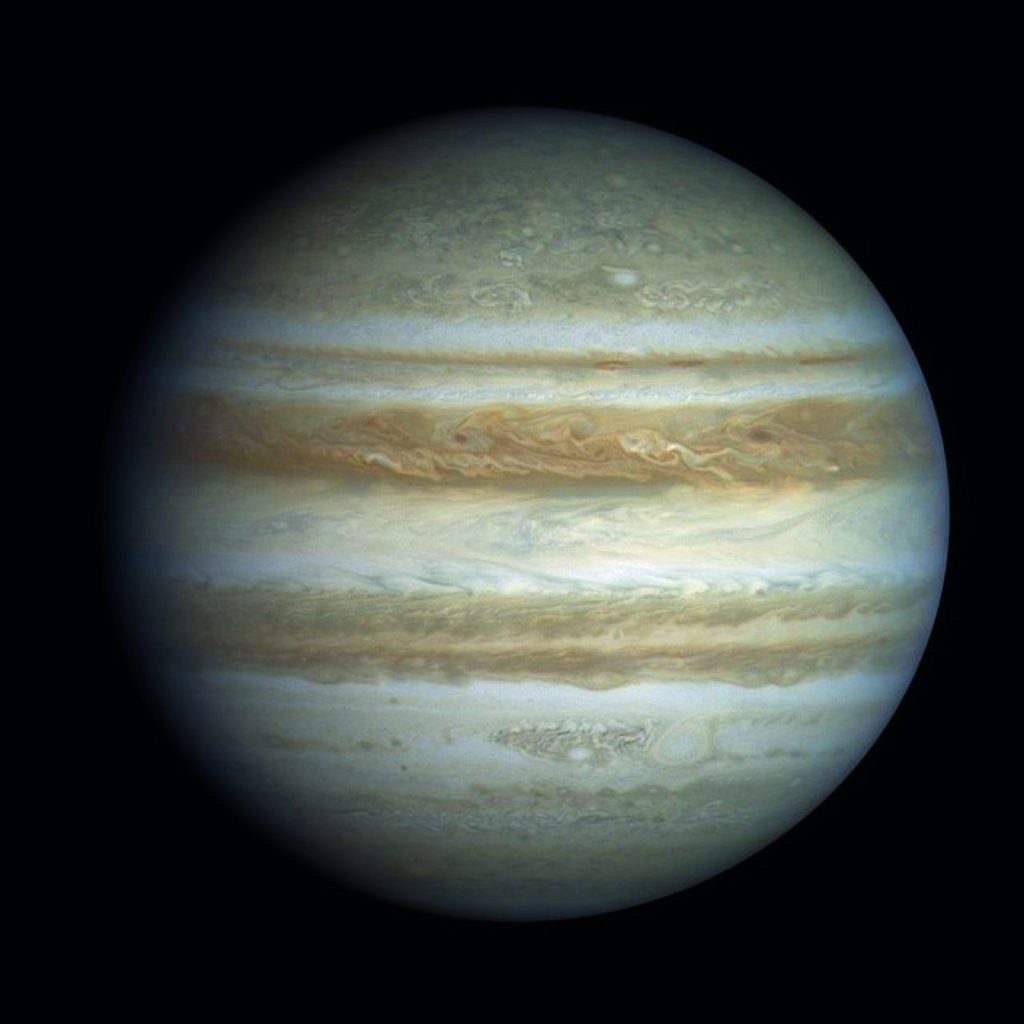
Jupiter’s visible image, recorded with the Cassini Imaging
Science Subsystem. CREDIT: NASA/JPL/SSI/Color composite by Gordan Ugarkovic
Titan’s Energy Budget
As the only moon in the solar system with a thick atmosphere, Saturn’s largest moon, Titan, is a particularly intriguing subject of study due to its similarities with Earth. Comparable to the water cycle on Earth, Titan’s atmosphere is able to support lakes and seas of liquid methane, which evaporates to form clouds and rainstorms. Therefore, studying Titan’s energy budget could tell us more about that of Earth’s atmosphere.
Again, using observations made by the infrared spectrometer on board Cassini, the researchers compared how much of the Sun’s energy was absorbed by Titan, with how much was emitted back into space. They concluded that Titan is in a rough equilibrium even though a small energy imbalance is possible.
‘Our analyses suggest that Titan does not have a large energy imbalance between the absorbed solar energy and emitted thermal energy discovered on its mother planet, Saturn, but it possibly has a small energy imbalance,’ Dr Li comments. His discoveries offer important insights into Earth’s atmospheric system, which is currently experiencing a small energy imbalance and related changes in climate.

Multi-spectra image of Titan. CREDIT: NASA/JPL/Space Science Institute – NASA planetary photojournal, prepared by Alfred McEwen
Earth’s Lorenz Energy Cycle
On our home planet, scientists describe the flow of energy throughout the atmosphere using the ‘Lorenz energy cycle’, which describes how much mechanical energy is generated, how much of it is converted into different forms, and how much is dissipated. Dr Li’s team studied the long-term variations in the cycle, which had not been particularly well studied in the past. To explore them, they analysed three independent meteorological data sets over several decades. ‘We updated the classical picture of the energy cycle of Earth’s global atmosphere based on modern-time satellite-based datasets,’ Dr Li describes.
The researchers discovered that while the total mechanical energy of the Earth’s atmosphere has remained relatively constant over time, it is also converting heat into mechanical energy more efficiently. In other words, its performance as a thermodynamic heat engine is improving over time. Ultimately, this means that as the climate warms, Earth’s atmosphere is becoming increasingly turbulent, as energy is being converted and dissipated more quickly.
This type of approach to studying climate change is often overlooked by scientists, but as Dr Li concludes, it is crucially needed to fully understand its effects on our atmosphere. ‘Our exploration of the temporal variations of the energy cycle suggests that the efficiency of the global atmosphere as a heat engine increased during the modern satellite era,’ he says. ‘These studies are helping us better understand climate change and storm activities on Earth.’
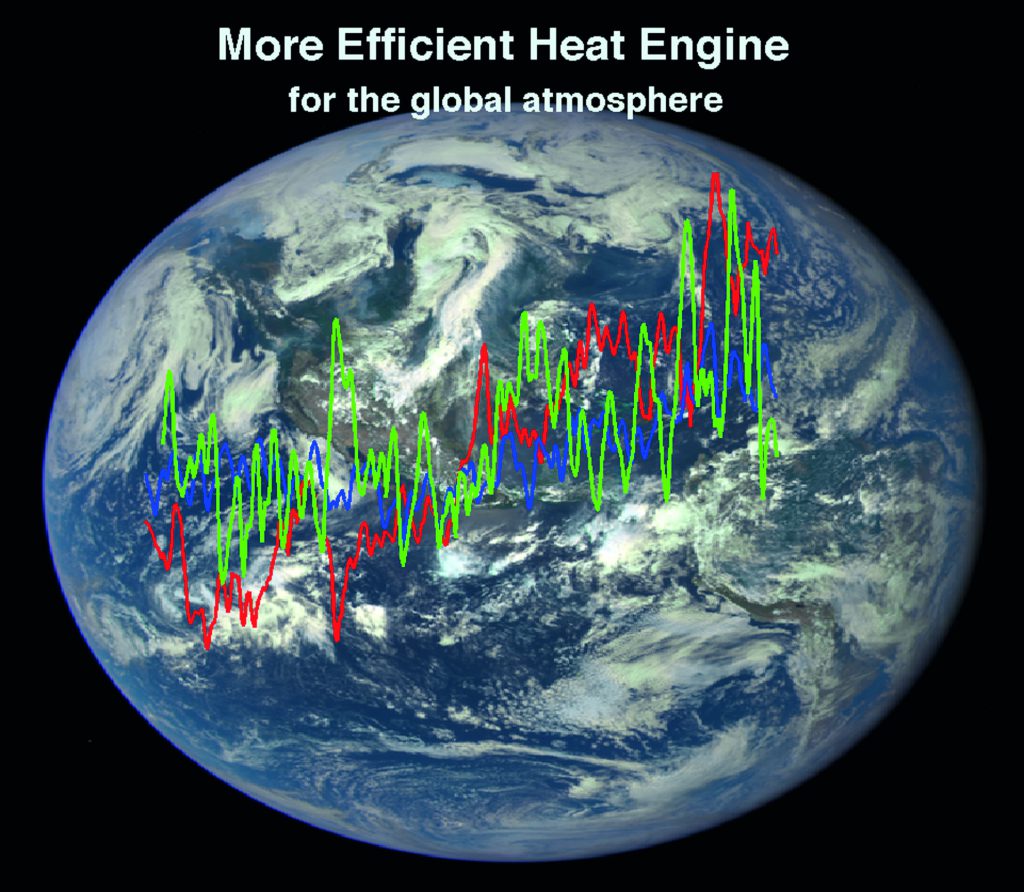
The background image of Earth was obtained by NASA’s Earth Polychromatic Imaging Camera aboard NOAA’s Deep Space Climate Observatory. The curves are the time series of the dissipation of the total kinetic energy, which is used to measure the efficiency of the global atmosphere as a heat engine during the modern satellite era (1979–2013).
Preparing for the Future
In studying the flow of energy throughout planetary atmospheres, Dr Li and his colleagues have provided astronomers with potential answers to a variety of problems. These insights are invaluable to the field of planetary astronomy, but they also come at a critical stage for our own planet, as our atmosphere experiences changes in its energy flow that have not been carefully examined in its history.
By gaining a more sophisticated understanding of the atmosphere’s performance as a heat engine, climate scientists will be better equipped to understand the extent to which the climate is changing, and to predict how it could transform in the future.
In addition to Jupiter, Saturn, Titan and Earth, Dr Li’s team is also exploring other planets and moons in our solar system. In particular, they are working on the radiant energy budgets and internal heat of the two ice giant planets – Uranus and Neptune. They are also developing an instrument with a possible space mission to better measure the radiant energy budgets and internal heat of the two ice planets. Such an instrument could be used to explore the radiant energy budgets and internal heat of other planets and moons.
Reference
https://doi.org/10.33548/SCIENTIA377
Meet the researcher

Dr Liming Li
Department of Physics
and Department of Earth & Atmospheric Sciences
University of Houston
Houston, TX
USA
Dr Liming Li completed his PhD in Planetary Sciences at Caltech in 2006. Upon graduating, he worked as a Research Associate in the Department of Astronomy of Cornell University, before moving to the University of Houston. Here, Dr Li is now an Associate Professor in the Department of Physics, where he has worked since 2009. His research group is interested in exploring the planetary atmospheres of giant planets, rocky planets and moons by combining observations, theories and numerical models. Recently, his group is mainly working on two space missions – Cassini and Juno.
CONTACT
W: http://www.uh.edu/nsm/physics/people/profiles/liming-li/
FUNDING
NASA
KEY COLLABORATORS
Andrew P. Ingersoll, Caltech
Peter J. Gierasch, Cornell University
Barney J. Conrath, Cornell University
Robert A. West, NASA/JPL
REFERENCES
L Li, X Jiang, RA West, PJ Gierasch, S Perez-Hoyos, A Sanchez-Lavega, LN Fletcher, JL Fortney, B Knowles, CC Porco, KH Baines, PM Fry, A. Mallama, RK Achterberg, AA Simon, CA Nixon, GS Orton, UA Dyudina, SP Ewald, RW Schmude Jr., Less absorbed solar energy and more internal heat for Jupiter, Nature communications, 2018, 9, 3709.
Y Pan, L Li, X Jiang, G Li, W Zhang, X Wang, AP Ingersoll, Earth’s changing global atmospheric energy cycle in response to climate change, Nature communications, 2017, 8, 14367.
L Li, X Jiang, HJ Trammell, Y Pan, J Hernandez, B J Conrath, PJ Gierasch, RK Achterberg, CA Nixon, FM Flasar, S Perez‐Hoyos, RA West, KH Baines, B Knowles, Saturn’s giant storm and global radiant energy, Geophysical Research Letters, 2015, 42, 2144–2148.
L Li, C A Nixon, RK Achterberg, MA Smith, NJ Gorius, X Jiang, BJ Conrath, PJ Gierasch, AA Simon‐Miller, F M Flasar, KH Baines, AP Ingersoll, RA West, AR Vasavada, SP Ewald, The global energy balance of Titan, 2011, Geophysical Research Letters, 38, L23201.
L Li, BJ Conrath, PJ Gierasch, RK Achterberg, CA Nixon, AA Simon‐Miller, FM Flasar, D Banfield, KH Baines, RA West, AP Ingersoll, AR Vasavada, AD Del Genio, CC Porco, AA Mamoutkine, ME Segura, GL Bjoraker, GS Orton, LN Fletcher, PGJ Irwin, PL Read, Saturn’s emitted power, Journal of Geophysical Research: Planets, 2010, 115, E11002.
L Li, AP Ingersoll, X Jiang, D Feldman, YL Yung, Lorenz energy cycle of the global atmosphere based on reanalysis datasets, Geophysical Research Letters, 2007, 34, L16813.
Creative Commons Licence
(CC BY 4.0)
This work is licensed under a Creative Commons Attribution 4.0 International License. 
What does this mean?
Share: You can copy and redistribute the material in any medium or format
Adapt: You can change, and build upon the material for any purpose, even commercially.
Credit: You must give appropriate credit, provide a link to the license, and indicate if changes were made.
More articles you may like
Dr Ralf Adam | New Technologies Shaping the Future of Oral Hygiene
Understanding the efficiency of various toothbrush technologies is essential for achieving optimal oral health. Dr Ralf Adam, who leads a dedicated team at Procter & Gamble in Germany, is keen to investigate the complexities of these technologies. His team have provided new insights into the best toothbrush types for plaque removal and the maintenance of gum health. By highlighting the importance of informed oral care decisions and ongoing investigations, this vital research works towards ensuring everyone can achieve a brighter, healthier smile.
WVU ADVANCE Center | West Virginia University Team Fosters Group-Level Equity and Inclusivity at Higher Education Institutions
Despite ongoing efforts to broaden participation in the academy, many groups remain underrepresented. More needs to be done to ensure that all faculty and students succeed in institutions of higher education. The WVU ADVANCE Center is an academic hub at West Virginia University, which provides services, events, mentorship opportunities, and other initiatives that promote the sense of belonging that leads to thriving faculty and students.
Dr Olalla Castro-Alvaredo | Measuring Entanglement: Symmetry-Resolved Entropy
Dr Olalla Castro-Alvaredo of the City University of London (UK) and her collaborators are advancing our understanding of an important phenomenon of quantum mechanical systems known as entanglement and, especially, its mathematical measures. Symmetry-resolved entanglement entropy is one such measure. Their study focuses on special quantum states which are excited with respect to a ground state. The research shows how the entanglement amongst quantum particles can be measured and assesses the contribution to the entanglement of quasiparticle excitations, particularly in the presence of additional symmetries.
Allison Balabuch – Professor Ann Brower Stahl | Bringing Archaeology to the Classroom and Beyond: The African Archaeology Review
The African Archaeology Review (AAR) journal recently celebrated its 40th anniversary. To mark this occasion, a special issue was compiled with an innovative theme: Archaeology for Education. To achieve this, the AAR editorial team assembled a group of academic researchers in archaeology with the proposition of writing articles collaboratively with educators that would make their research centred on Africa’s rich pasts accessible for use in school learning. The goal is to change the stories we tell about Africa both within and outside the continent.


